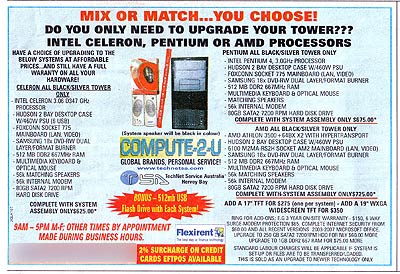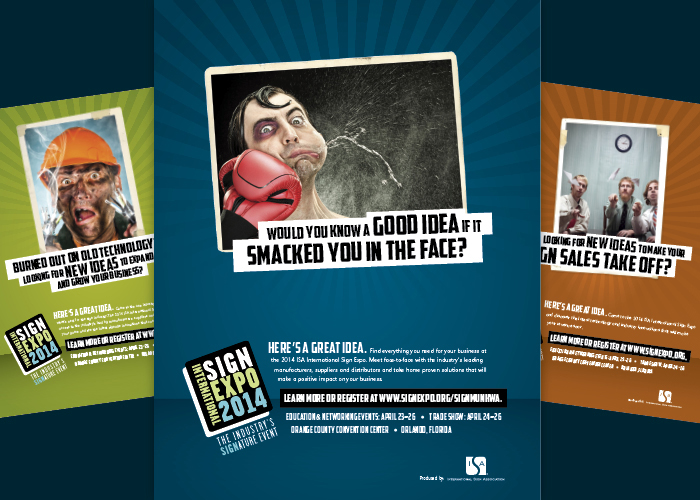Most of the time we promote our businesses and events by sending out positive messages about learning best practices and taking home ground-breaking innovative ideas.
For the most part, it works — it’s what we aspire to. But sometimes a scare tactic can break through the communications noise and get you to stop in your tracks. If you’re reading this based on the title, then my point is made.
Here are five big mistakes that will have you sitting in the land of status quo or, worse, wondering why your competitors are creating “Happy” videos.
- Never take any risks and be sure to be the biggest corporate bore on the block.
Do your ads have a lot of copy and cover multiple topics? Or are they visually appealing with engaging headlines? Using humor and appropriate graphics can engage your audience and increase recall—you are speaking to humans after all. You can protect your brand, use more conversational language, and be a little controversial all at the same time. Riddle me this, which ad makes you want to stop, read, and take action?
- Put all your resources into acquisition and worry about retention later.
Have you ever heard a strategist tell you that it costs five times more to acquire a new customer than to retain one? Growing your business and gaining market share is important, and in this society word of mouth surpasses all other channels in getting the word out and securing new customers. Make sure you are keeping in contact with your current customers and registrants. Remind them of the exciting programs they’ll take part in (or have in the past) and offer them new programming to maintain their perception of the value they get from your event. Make sure you are providing excellent service and experiences and reminding them of that.
- Procrastinate getting your messages out and then blast your customers continuously at the last minute.
Ahhh, the old problem of too many piles on your desk and how to prioritize your to-do list. This is a universal issue with most professionals today. However, remember that timing is critical for the success of your marketing campaign. Have you ever gotten to a point when your event is only a couple months out and you start to panic because the numbers aren’t where you need them to be? Things such as printing and postage costs can sky rocket when you wait too long.
Also, you may be hitting your customers up at the wrong time in THEIR business cycle. Maybe your competitor got their message out first and ended up getting the registrations you missed out on. Work with your team to make sure your programming is developed in a timely fashion, your staff has time to review collateral, and your partners have the time they need to create and distribute your campaign elements at the right time. And give your customers a break by not emailing them several times a week — they have a job, too and will unsubscribe from your list. You’ve now lost a long-term prospect by panicking in the short term.
- Talk about how fantastic your event is going to be then make sure your programming is basic, your speakers are monotone, and your networking events are ho hum and hard to find.
There are several parts of the marketing mix that oftentimes go undeveloped. Creating engaging marketing collateral is the part most often used. The parts of the mix that may be harder to implement, but are just as important are deciding on optimal price points and developing advanced and memorable programming (both education and networking elements). All of these factors work together to make a successful event. Make time to research and discuss the “product features” and understand how your market responds to price, value, and messaging. Take the time to train speakers and get them engaged. Create and execute exciting onsite activities. Deliver it and you’ll see the results.
- Don’t evaluate or measure any of your activities. Rely solely on your gut and don’t make plans ahead of time.
I recently spoke to a CEO of a major brand and was told they don’t have reports of their communications activities. No reports, no benchmarks, no understanding if the half million dollars they just put into a marketing campaign tactic was having an effect. All they had was some qualitative gut feelings. Sometimes those are important—when you know the market or your business really well and have experience in marketing and design strategies. But even so, the best option for making sound business decisions is to look at how your strategies have performed in the past. Did that brochure bring in registrations? Should you move resources into more rich media and experiential activities? When are people responding? What messages did they respond to more? It may seem like a daunting task or you don’t have enough time, but it will ultimately save you time and money in the future. And there are plenty of partners out there who can help you with your market research. At CSG Creative, we provide post-show reports for many clients who provide us with data to analyze, and many of them have redirected their efforts (or confirmed their already awesome strategic direction).
So now you know what to avoid and what to take action on to make your event a success! Have you any stories about success or failures in your campaigns? Share them with us.


